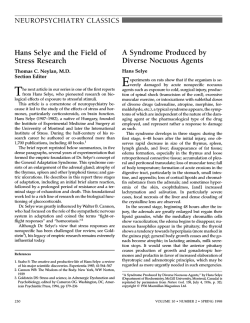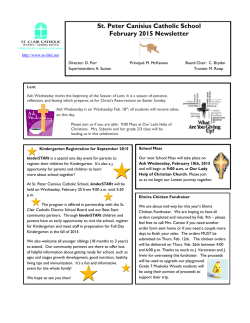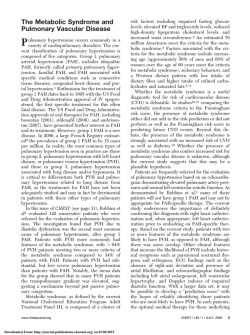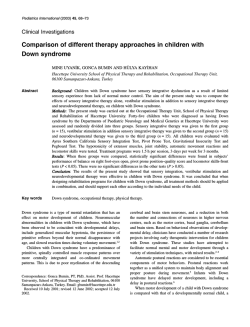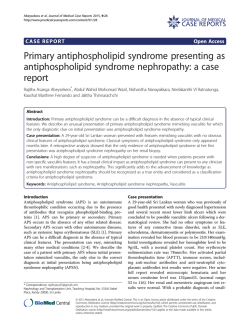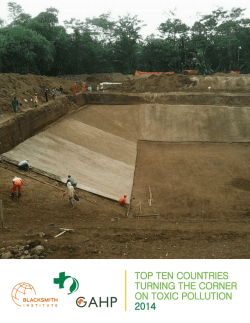
Download - journal of evolution of medical and dental sciences
DOI: 10.14260/jemds/2015/245 CASE REPORT TOXIC EPIDERMAL NECROLYSIS TEN / (LYELL'S SYNDROME) IS A SERIOUS AND RAPIDLY PROGRESSIVE FATAL ERUPTION OF SKIN FOLLOWING CARBAMAZEPINE INTAKE, NEEDS PROMPT ADMISSION AND URGENT CARE P. Ramu1, D. Annapurna2 HOW TO CITE THIS ARTICLE: P. Ramu, D. Annapurna. “Toxic Epidermal Necrolysis Ten/ (Lyell's Syndrome) is a Serious and Rapidly Progressive Fatal Eruption of Skin Following Carbamazepine Intake, Needs Prompt Admission and Urgent Care”. Journal of Evolution of Medical and Dental Sciences 2015; Vol. 4, Issue 10, February 02; Page: 1718-1722, DOI: 10.14260/jemds/2015/245 ABSTRACT: BACKGROUND: Toxic epidermal necrolysis TEN / (Lyell's syndrome) It is a serious and rapidly progressive fatal eruption of skin following intake of certain drugs which leads to a picture like burns. The condition is fairly uncommon in children as compared to adults, needs prompt admission and urgent care. CASE CHARACTERISTICS: A 12 years female child admitted for generalized rash (with extensive skin peeling) of 2 days duration, with altered sensorium and 1 episode of generalized tonic clonic seizure. OBSERVATIONS: A 12 years female child admitted for severe generalized rash with extensive skin peeling following nearly 1 month of intake of carbamazepine for complex partial seizures. Despite of adequate treatment child was died of septicemia and diselectrolytemia on 2nd day of admission. MESSAGE: TEN is a rare but fatal, serious and rapidly progressive eruption of skin following intake of certain drugs and physicians prescribing drugs should be aware of this adverse effect and its management. KEYWORDS: Toxic epidermal necrolysis (TEN), carbamazepine, Nikolsky sign, Stevens Johnson syndrome (SJS). INTRODUCTION: Toxic epidermal necrolysis (TEN), is a serious, fatal eruption of skin usually follows certain drugs (Examples Antiepileptics, Antibiotics, Antituberculous drugs etc) rarely may follow some infections, and is rare in children than in adults. CASE REPORT:- A 12 years female child with 32 kgs weight, born to non-consanguinous parents had 1 episode of complex partial seizures 1 month ago lasting for few minutes for which the child was prescribed carbamazepine 200 mg BD by a local physician. On the 25th day of treatment she developed sudden onset of generalized rash with diffuse erythema, fever, malaise and followed by inflammation of the eyelids, conjunctivae, mouth and anogenital areas. Within few hours multiple flaccid blisters erupted over the trunk followed by extensive skin peeling. Shown to a local physician and referred. 5 hours before admission at our hospital child had 1 episode of generalized tonic clonic seizure lasted for 5 minutes while on the way to the hospital. On examination child was in altered sensorium, GCS (Glassgo Coma Scale) - 9, Pulse Rate-120 Per Minute, Respiratory rate – 36 per Minute, Temperature - 1030, Blood Pressure (B.P) – 100/70 mm hg, pupils bilaterally normal size and reacting to light. Generalized rash involving more than 50% of body surface area with extensive skin peeling, multiple flaccid blisters, positive Nikolsky sign, involvement of multiple mucosae with minimal involvement of extremities, with flaccid blisters at finger tips, but J of Evolution of Med and Dent Sci/ eISSN- 2278-4802, pISSN- 2278-4748/ Vol. 4/ Issue 10/Feb 02, 2015 Page 1718 DOI: 10.14260/jemds/2015/245 CASE REPORT no target leasons over the body. Laboratory investigations suggested Leucocytosis (29,000 WBC/ cub mm), elevated ESR (90 mm 1st hour), mild elevation of the liver enzymes (SGPT 386), serum creatinine (3 mg/dl). The child was treated with broad spectrum Parenteral antibiotics, I.V. fluids, Sterile dressings and I.V. Lorazipam, Phenytoin, I.V. Hydrocortisone, Ranitidine and other supportive treatment including Eye Care with all sterile precautions as in case of burns. Despite of these measures the child was died on 2nd day of admission secondary to Sepsis, diselectrolytemia and renal failure. DISCUSSION:1,2,3,4,5,6,7 TOXIC EPIDERMAL NECROLYSIS (LYELL'S SYNDROME): The condition is fairly uncommon in children as compared to adults. It is a serious and fatal rapidly progressive eruption of skin following intake of certain drugs which leads to a picture like burn. It can rarely follow bacterial or viral infections, vaccination or radiotherapy. Pathogenesis is not proved but may involve a hyper sensitivity phenomenon resulting in damage of the basal cell layer of epidermis secondary to Keratinocyte apoptosis. Drug induced TEN usually develop within 48-72 hours after intake of a drug. However, in some cases it may take 2-3 weeks. Commonly implicated drugs are cotrimoxazole, sulphonamides, tetracyclines, isoniazide, hydantoin, carbamazepine barbiturates, phenothiazines, etc. The rash rapidly progresses to involve larger areas of the body. The skin becomes very tender because of necrolysis. The rash is characterized by sudden onset and generalization within 24 to 48 hours and positive Nikolsky sign (Denudation of skin with gentle tangential pressure) present only in areas of erythema. These features will differentiate TEN from other differential diagnoses. High fever and associated symptoms are usual accompaniment. Mucosal involvement is not as common as SJS syndrome but there may be involvement of eyes, oral mucosa, genitalia. The condition resembles second degree burns and is associated with fever, vomiting, loose motion and often chest pain. Course of the illness may be relentlessly progressive, complicated by severe dehydration, diselectrolytemia, secondary infection, Septicemia and shock. Survivors may have complications like loss of nails, hair, strictures of mucosal surfaces corneal and conjunctival scarring. The condition may become lifethreatening within hours of its onset. MANAGEMENT: Cases of both SJS and TEN need prompt admission and urgent care. The offending or suspected drug is to be stopped and structurally related compounds are to be avoided. Timely intervention can save patients' life. When a patient is on multiple drugs, ideally all drugs are to be stopped. However, in some situations lifesaving drugs may be spared and others are stopped. The patient is to be admitted in an intensive care unit/burn unit for specialized care. The treatment approach should be a team effort involving multiple specialists related to symptoms and organsystem involvement. Management of fluid-electrolyte balance is important. Oral/I.V corticosteroids are mostly prescribed drugs but their role is controversial. There are two distinct schools of experts who are pro and against the usage of it. Other treatment options are oral cyclosporin, mycophenolate mofetil, intravenous immunoglobulin, cyclophosphamide, etc. Prophylactic Oral/I.V antibiotics may be J of Evolution of Med and Dent Sci/ eISSN- 2278-4802, pISSN- 2278-4748/ Vol. 4/ Issue 10/Feb 02, 2015 Page 1719 DOI: 10.14260/jemds/2015/245 CASE REPORT required in cases of large area of erosions depending upon severity to prevent development of septicemia. Proper skin care and eye care are important aspects of treatment. Differential Diagnosis: 1. Chemical burns. 2. Graft versus Host disease. 3. Toxic shock syndrome. 4. Staphylococcal scalded skin syndrome (Ritter disease). 5. Other drug eruptions like Stevens Johnson Syndrome. 6. Pemphigus. 7. DRESS syndrome (Anti convulsant hyper sensitivity syndrome). Is a rare entity characterized by Toxic epidermal necrolysis, Lymphadenopathy and multisystem involvement. CARBAMAZEPINE PHARMACOLOGY8: An Iminostilbine is absorbed slowly and erratically after oral administration. Peak concentrations in plasma are observed 4-8 hours after oral ingestion, but may be delayed by as much as 24 hours. The drug distributes rapidly into all tissues. Approximately 75% of carbamazepine binds to plasma proteins and concentrations in the CSF appear to correspond to the concentration of free drug in plasma. Like phenytoin, carbamazepine, limits the repetitive firing of action potentials evoked by a sustained depolarization of spinal cord or cortical neurons. It is a derivative of Iminostilbine with a carbamyl group at the 5 position this molecule is essential for potent anti-seizure activity. Therapeutic concentrations are reported to be 6-12 ug/ml, although considerable variation occurs. Side effects referable to the CNS are frequent at concentrations above 9ug/ml. DRUG CROSS REACTIVITY OF CARBAMAZEPINE: Cross reactivity has been described between aromatic antiepileptics i.e between carbamazepine, phenytoin and carbamazepine, oxcarbazepine. Hence the prescribing physician should be aware of cross reactivity among these drugs and consider alternate drugs whenever feasible. FDA ALERT [12/12/2007]5,9,10,11,12: Dangerous or even fatal skin reactions (Stevens Johnson syndrome and toxic epidermal necrolysis), that can be caused by carbamazepine therapy, are significantly more common in patients with a particular human leukocyte antigen (HLA) allele, HLAB*1502. This allele occurs almost exclusively in patients with ancestry across broad areas of Asia, including South Asian Indians. Genetic tests for HLA-B*1502 are already available, but in limited centers and is too expensive. Patients with ancestry from areas in which HLA-B*1502 is present should be screened for the HLA-B*1502 allele before starting treatment with carbamazepine. If they test positive, carbamazepine should not be started unless the expected benefit clearly outweighs the increased risk of serious skin reactions. Patients who have been taking carbamazepine for more than a few months without developing skin reactions are at low risk of these events ever developing from carbamazepine. This is true for patients of any ethnicity or genotype, including patients positive for HLA-B*1502. This new safety information will be reflected in updated product labeling. J of Evolution of Med and Dent Sci/ eISSN- 2278-4802, pISSN- 2278-4748/ Vol. 4/ Issue 10/Feb 02, 2015 Page 1720 DOI: 10.14260/jemds/2015/245 CASE REPORT Therapeutic uses of Carbamazepine: (FDA-approved) for treatment of 1.epilepsy, 2.mania/bipolar disorder, and 3.neuropathic pain (Ex: Trigemial Neuralgia). SJS and TEN are serious blistering reactions of the skin and mucous membranes that can be permanently disabling or fatal. After review of the information from manufacturers as well as published studies and postmarketing adverse event reports, FDA and the manufacturers have agreed that labeling changes are needed for carbamazepine products. Information on the association of carbamazepine and SJS/TEN, and information to guide testing for the HLAB*1502 allele in at-risk populations, has been added to the existing boxed warning, and to the sections of the labeling covering warnings, laboratory tests, and adverse reactions. CONCLUSION: Therefore the prescribing physicians should be aware of this rare but fatal, serious and rapidly progressive eruption of skin (Toxic epidermal necrolysis). They should consider the benefit: risk ratio while prescribing these potentially hazardous drugs and should be aware of the management strategies for good outcome in these patients. BIBLIOGRAPHY: 1. Chung WH, Hung SI, Yang JY, et al: Granulysin is a key mediator for disseminated keratinocyte death in Stevens-Johnson syndrome and toxic epidermal necrolysis. Nat Med 2008; 14:13431350. 2. Gubinelli E, Canzona F, Tonanzi T, et al: Toxic epidermal necrolysis successfully treated with etanercept. J Dermatol 2009; 36:150-153. 3. Endorf FW, Cancio LC, Gibran NS: Toxic epidermal necrolysis: clinical guidelines. J Burn Care Res 2008; 29:706-712. 4. Ferrandiz-Pulido C. Garcia-Patos V. A review of causes of Stevens-Johnson V syndrome and toxic epidermal necrolysis in children. Arch Pis Child 2013: 98:998. 5. Genin E. Chen DP. Hung SI. et al. HLA-A*31:01 and different types of carbamazepine-induced severe cutaneous adverse reactions: an international study and meta-analysis. Pharmacogenomics J 2014: 14:281. 6. Schwartz RA. McDonough PH. Lee BW. Toxic epidermal necrolysis: Part I. Introduction, history, classification, clinical features, systemic manifestations. etiology, and immunopathogenesis. J Am Acad Dermatol 2013: 69:173.el. 7. Schwartz RA. McDonough PH. Lee BW. Toxic epidermal necrolysis: Part II. Prognosis, sequelae, diagnosis, differential diagnosis, prevention, and treatment. J Am Acad Dermatol 2013: 69:187.el. 8. Hung, S.I. et al. (2006) Genetic susceptibility to carbamazepine-induced cutaneous adverse drug reactions. Pharmacogenet. Genomics, 16(4):297-306. 9. Man, C.B.L. et al. (2007) Association between HLA-B* 1502 Allele and Antiepileptic Drug Induced Cutaneous Reactions in Han Chinese. Epilepsia, 48(5):1015—1018. 10. Ferrel PB, McLeod HL: Carbamazepine, HLA-B*1502 and risk of Stevens-Johnson syndrome and toxic epidermal necrolysis: US FDA recommendations. Pharmacogenomics 2008; 9:1543-1546. 11. Chen P. Lin JJ. Lu CS. et al. Carbamazepine-induced toxic effects and HLA- B*1502 screening in Taiwan. N Engl J Med 2011: 364:1126. J of Evolution of Med and Dent Sci/ eISSN- 2278-4802, pISSN- 2278-4748/ Vol. 4/ Issue 10/Feb 02, 2015 Page 1721 DOI: 10.14260/jemds/2015/245 CASE REPORT 12. Mockenhaupt, M.et al. (2005) Risk of Stevens- Johnson syndrome and Toxic epidermal necrolysis in new users of antiepileptics. Neurology. 64(7):1134-1138. Figure 1 & Figure 2: Showing extensive skin pealing oral, conjuctival involvement and flaccid bulla at finger tips. Figure 3: Showing positive Nikolsky sign at pressure areas. Fig. 1, 2 and 3 AUTHORS: 1. P. Ramu 2. D. Annapurna PARTICULARS OF CONTRIBUTORS: 1. Assistant Professor, Department of Paediatrics, Andhra Medical College, King George Hospital, Visakhapatnam. 2. Assistant Professor, Department of Pharmacology, Andhra Medical College, Visakhapatnam. NAME ADDRESS EMAIL ID OF THE CORRESPONDING AUTHOR: Dr. P. Ramu, Door No. 14-1-122/13, FF-3, Rajasagi Residency, Nowroji Road, Maharanipeta, Visakhapatnam-530002, Andhra Pradesh. E-mail: [email protected] Date of Submission: 09/01/2015. Date of Peer Review: 10/01/2015. Date of Acceptance: 22/01/2015. Date of Publishing: 02/02/2015. J of Evolution of Med and Dent Sci/ eISSN- 2278-4802, pISSN- 2278-4748/ Vol. 4/ Issue 10/Feb 02, 2015 Page 1722
© Copyright 2026
